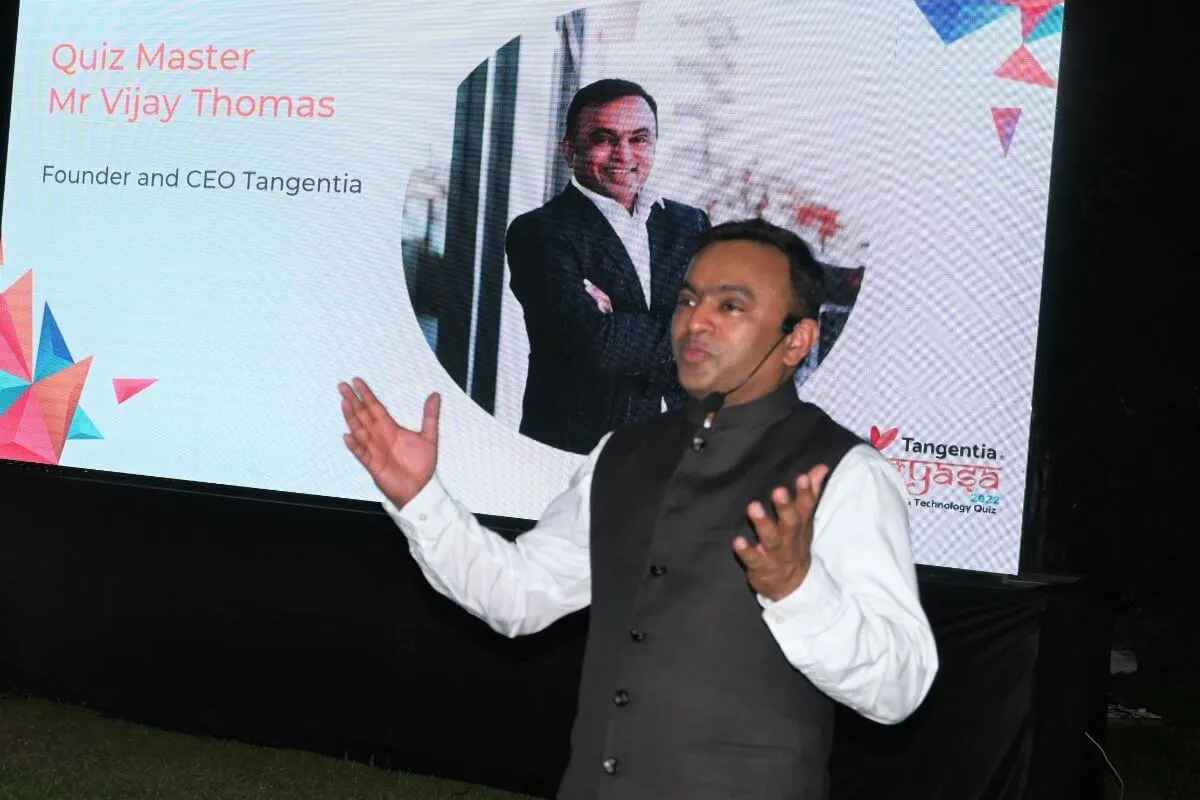|
|
As the CEO of a rapidly growing tech enterprise, I understand the importance of staying ahead of the curve and being aware of the latest trends in order to make strategic decisions for our organization. Let's talk about the latest developments and innovations in the tech industry to look out for in 2023 to stay up to date with the latest advancements and their potential impact on various industries.
Our goal is to provide valuable insights and information that will help you stay ahead of the curve in the ever-changing tech landscape. There are several technology trends that are forecasted to continue to grow and evolve in the next few years. Some of the most significant trends include:

One of the key components of an autonomous enterprise is the use of AI and machine learning (ML) to automate decision-making. This can include everything from analyzing data to identifying patterns and making predictions.
Another important aspect of an autonomous enterprise is the use of IoT and edge computing. This allows the autonomous enterprise to collect, process, and analyze enormous amounts of data in real time, making it possible to make decisions and take actions in near-real time. This is especially important in industries such as manufacturing, planning and transportation where rapid decision-making is crucial.
The autonomous enterprise also relies on automation and self-service capabilities, which allow it to operate with minimal human intervention. This can include automating routine tasks such as inventory management and supply chain operations, as well as providing self-service capabilities to customers, such as online ordering and account management.
An autonomous enterprise also requires a robust and secure infrastructure that can handle the large amounts of data and automation required to support it. This includes technologies such as cloud computing, which allows for scalability and flexibility, and blockchain, which provides a secure and decentralized way to store and manage data.
These are just a few examples of the technology trends that are forecasted to continue to grow and evolve in the next few years. It is important to note that technology is constantly evolving, and latest trends and developments can emerge suddenly, making it challenging to predict the exact trajectory of certain technologies.
Additionally, we are also seeing a shift towards more sustainable and environmentally-friendly technology, which is likely to become an important trend in the future. Overall, the technology industry is an exciting and dynamic field that offers many opportunities for innovation and growth.
In conclusion, technology is constantly evolving and changing the way we live and work. Keeping an eye on the latest trends and developments can help businesses and individuals stay ahead of the curve and take advantage of new opportunities. Hope this helps you on this journey of discovery and innovation in the tech industry.
Microsoft Power Automate is a service that helps you create automated workflows between your favorite apps and services to synchronize files, get notifications, collect data, and more. Power Automate is one of the pillars of the Microsoft Power Platform.
This technology is home to low-code tools that span across Office 365, Dynamics 365, Azure, and various standalone applications. Power Automate, specifically, is a workflow and process automation tool. It seeks to automate workflows with an API-based approach, exchange data with legacy on-premises software, and integrate AI models into your workflows with a low-code approach.
Microsoft has now acquired Softomotive, a 15-year-old robotics process automation company, to enhance Microsoft Power Automate product. According to the description on its website, Softomotive offers two products for attended use and unattended use.
Microsoft Power Automate is a low-code/no-code business process automation tool that is a component of the Microsoft Power Platform family. Microsoft wants to integrate Softomotive's products into this tool. For users of Microsoft's own “UI Flows” robotic process automation technology, WinAutomation is already incorporated and now offered without charge.
Given that Softomotive products 'WinAutomation' and 'ProcessRobot' will no longer receive support, updates, or upgrades, according to the Power Automate team, this is the perfect time to migrate to Microsoft’s suite of automation tools built into Office365. Support for WinAutomation solutions will cease on the 31st of December, 2022. Any current Softomotive customer after that date will still be able to use their software, regardless of the licensing level, but without support, upgrades, or updates. All clients who do not have a special arrangement with Softomotive are subject to this. Customers should contact their Microsoft sales representative if they have negotiated a personal contract and terms of service with Softomotive.
1. Streamline everyday tasks
Consider the number of emails you get every day. Consider receiving a notification when a high-priority email is received. A template can be enabled with Power Automate so that users receive only that, guaranteeing a critical email is never again missed.
2. Improve workforce productivity
Your company may save time, increase production, and operate much more successfully with the aid of Power Automate. Employees can work more effectively and boost corporate performance by automating repetitive operations that take up time during the day.
3. Automate tasks across business systems
Power Automate links and automates work across numerous programmes, both inside and outside the Microsoft eco-system. SharePoint, Power BI, Word, Outlook, Teams, Planner, Asana, MailChimp, Twitter, Adobe Sign, DocuSign, Google Drive, Eventbrite, FreshBooks, and Trello are a few examples of popular connectors.
4. Increase employee satisfaction and reduce human error
Employees are free to concentrate on the tasks that actually matter and need more attention when time-consuming, repetitive operations are automated. As a result, this may result in increased emotions of accomplishment and job satisfaction. Furthermore, automation lowers the possibility of human error, giving you peace of mind that activities are being finished at set standard.
5. Save time with decision making
You may speed up decision-making by automating procedures like approval workflows for handling time off requests, document approvals, sales prospects, etc.
6. Use predefined templates to create a flow
Although creating a flow from scratch is a possibility, Power Automate has a large library of established templates. These enable you to develop procedures around approvals, notifications, productivity, social media, and other topics that save time.
7. Accessible anywhere
Team members can build, execute, and monitor automated workflows even when they are not at the office thanks to the Microsoft Power Automate mobile app.

You can automate certain tasks, to achieve the following:
Customers get more options for building workflows in Power Automate by delivering a full low-code desktop automation solution with WinAutomation. Anyone can now create RPA bots using our current browser-based writing tool or a brand-new desktop application using WinAutomation.
Increasing the available UI automation drivers for popular apps and services In an effort to deliver the most comprehensive set of RPA capabilities on a single platform, Microsoft is now enhancing the desktop automation experience by integrating a wide range of connectors and apps from Softomotive, including SAP, legacy terminal screens, Java, Citrix, and more.
Enabling multitasking and parallel execution – Customers can now run several processes and automations concurrently on the same computer to decrease latency and boost the effectiveness of their bots. This extends existing Power Automate API automation's tremendous scale to UI automation.
Offering hundreds of extra features – To enable low-code bot development, we are bringing our customers even more Softomotive innovation developed over the previous 15 years.
Tangentia is a certified RPA consultant that can help your organization develop robust RPA solutions using Microsoft Power Automate technology. Our team of certified RPA developers can help you implement and integrate Microsoft Power Automate (formerly WinAutomation) automation technologies and get the most out of Microsoft Power Automate’s automation tools for your business.
|
|||||||||||||||||||||||||||||||||||||||||||||||||||||||||||||||||||||||||||||||||||||||
|
|
||||||||||||||||||||||||||||||||||||||||||||||||||||||||||||||||||||||||||||||||||||||||||||||||
|
|
|
|||||||||||||||||||||||||||||||||||||||||||||||||||||||||||||||||||||
|
|||||||||||||||||||||||||||||||||||||||||||||||||||||||||||||||||||||
Traditionally, a company that required apps depended solely on the highly specialized skills and knowledge of coders to develop the apps they need. This resulted in long wait times for apps and significant operational inefficiencies that left organizations struggling to fulfill their needs.
Add to this the increased need for digital apps and shortage of developers in recent years and it becomes clear that IT teams need a way to build powerful apps quickly with the resources at hand. Fortunately, this is where no-code and low-code app development come in.
At first glance, no-code and low-code seem like the same thing, and they are often confused with one another. However, there are subtle differences between the two that you should know. With this in mind, let’s start by defining these types of app development.
No-code app development is a method of building apps that requires absolutely no coding knowledge or experience. This is a way for non-professional developers, such as employees outside of the IT department, to build the apps they need quickly and easily. These apps can be built using a visual interface and drag-and-drop building platform that contains all the elements required to build an app within minutes. Think of it as similar to a website-building platform.
In contrast, low-code app development is a more flexible method of building apps that still has the drag-and-drop visual interface for people who don’t know programming languages. However, there may be minimal hand-coding required, particularly when you want to customize these applications.

The greatest advantage of no-code app development is that it doesn’t require any coding to build an app. Anyone can quickly develop an app and launch it with the click of a button. This is the ideal solution when you need an app that will solve a specific problem within a department or a company, making it easy to address an immediate need without having to tap into your IT resources.
There are two major disadvantages of no-code app development to be aware of. The first of these is that the apps that can be built will be fairly basic. However, when they are needed to solve a specific problem, this is generally not a problem. The other disadvantage to no-code app development is that it can be easy for people within an organization to develop apps without proper consideration or supervision, resulting in possible security concerns, problems with integration, and compliance issues.
Low-code app development comes with several advantages. Apps can be developed quickly, which means there is no more waiting for app development when working on a larger project. In addition, app development costs less, increasing your ROI, while lowering your risk. And with a single click, an app can be deployed and changes to the app can be made as people interact with it.
However, like no-code app development, there are disadvantages to using low-code app development. Prime among these is the fact that with just a low level of coding knowledge, you will find there is a steep learning curve. Low-code apps are not easily suited to building enterprise-grade apps that offer the high performance, quality and scalability.
With the above differences between no-code and low-code app development, you might find it challenging to decide which one you need. No-code app development is ideal for simple front-end apps, such as those that can pull, analyze, report on and export data. No-code app development is also good for apps that perform repetitive tasks and for simple internal apps.
On the other hand, low-code app development is best suited to building standalone web and mobile apps that are more likely to be integrated with other systems and multiple data sources. This method of app development can be used for nearly any type of app, with the exception of highly sophisticated, mission-critical apps that need to be scaled and must interact with multiple systems and data sources.
Connect with a member of the Tangentia team today to learn more about how we can help you use no-code and low-code app development to get the apps you need quickly and easily, while easing the burden on your IT department.
|
|
|||||||||||||||||||||||||||||||||||||||||||||||||||||||||||||||||
|
|||||||||||||||||||||||||||||||||||||||||||||||||||||||||||||||||
Vijay talks of how a chai wala can become a PM and hence anyone can dream. “You just have to dream and manifest it in you. We live in a wonderful world where everything is possible,” says Vijay. “The only reason something doesn’t happen is that people don’t dream big or don’t push those dreams hard enough.”

Vijay also believes that luck also plays a major role in your success and failure. “Many a time things don’t turn out the way you plan it and luck does play a role in this. I have come across many people who don’t believe in luck, but I do not agree with that. According to me, there are some elements of the universe that helps you when you manifest your dreams into it,” said Vijay, adding that the harder you work, the luckier you get. “You need to think of possibilities. I had always been a daydreamer as a kid and I used to visualize things that will make this world a better place. There is nothing wrong with dreaming and it does not hurt to dream, and I kept dreaming and grabbed each opportunity that came my way. There is a saying in Canada, quoted by a famous hockey player, Wayne Gretzky: ‘You miss 100% of the shots, you don’t take. Taking shots at goal often increases your chances of scoring in business and in life in general. I truly believed in that and made sure that I take a shot at every opportunity that came my way and tried to make the most out of it.”
Vijay shares with us that his parents were not in favour of him getting into business and they advised him against it. “My mother told me that nobody in our family had been successful in business and anybody who tried their hand at anything business-related, failed miserably,” said Vijay adding that his parents told him to get a job and work for any big software company. “I would have been a vice president by now if I had to listen to my parents but that was not my dream, I truly wanted to do something on my own and create a business and decided to give a chance to myself. I was very adamant to make it successful, which I did and today, I run a 20m dollars (150 crores) company with zero debt.”

Vijay’s wife has been a strong support system in his journey of success. “For the first 4 years, our company did not make any money and I did not even pay a salary to myself,” said Vijay adding, In a place like Canada, which was completely new terrain for him, he had no idea how this will turn out. “My wife always supported me to achieve my dreams and today my family owns 100 percent equity in the company since we never raise any funding from any other source. I have built this company from scratch.”
Today, Vijay owns a decently sized IT business and there is a very interesting story about how all this started. After completing his MBA from the Goa Institute of Management, Vijay joined Satyam Computers, a leading software services company in the late 90s. “I worked there for 3 years in the management consulting division of the company, and I was involved in some groundbreaking projects. During that time, Chinese businesses were looking to expand into India and the bicycle business was ripe for the taking. A major Indian bicycle company approached us to find a solution and we redesigned their supply chain and made them more efficient and customer-centric. I have been involved in a palm pilot-based B2B E-commerce system for them in 1999,” he said adding that with the help of that system a vendor could order their stock directly through the E-commerce platform developed by them and get the bicycles delivered to their shops. “This was the time when the e-commerce platforms such as Flipkart and Amazon did not exist. We were so much ahead of our time that we used the palm pilot to execute the orders.”
Everyone has a turning point in their lives that changes their destiny and when I asked Vijay about the same, he said, “The turning point is very interesting. Harshad Mehta opened the doors of the stock market for India which attracted me towards it, and I started reading more about stocks and then I borrowed some money from my dad to invest in the stock market,” he said as he went to Engineering school, he honed this skill even more “Let me tell you a very interesting story behind this,” he continued, “When I joined the engineering college we used to pay the fees every semester and in case you miss one payment for one semester, the late fee was only five hundred rupees, so that gave me an idea to invest the money of the fees in stocks and for this, I got some of my friends together and invested even their money thinking we will make some profit and pay the late fee charges in the second semester. It was quite a big risk since everything was at stake and if something had to go wrong the whole thing would have turned upside down. I told everyone that I will pay their late fees and invested all the money into various stocks but luck played its part and I got all the money back with the profits that enterprising thing made me confident enough to venture into the business in the future.”
After finishing Engineering, Vijay did his MBA from the Goa Institute of Management and joined Satyam Computers. “It is due to the IT industry that I got to travel across the world and I worked overseas in Boston for some time,” he said adding, From Boston, he got an opportunity in a Canadian company in Montreal as a project manager. As his wife could not get a marketing job in Montreal as French was essential in marketing, they moved to Toronto after a year. “I joined a French company in Paris with operations in Canada and they made me the head of their Toronto operations. I did very well there and we received many awards but then the real turning point came into my life that changed everything,” he paused for a while and continued, “I came to know that the owners in France sold the company to new investors and I was the only one left in Canada that was reported to the folks in France and they wanted me to rebuild the company and build right from scratch in Toronto. This was the straw that broke the camel’s back. That made me think if I had built the company for somebody else right from scratch then I would rather build it for myself and the only difference was that if I had to build it for someone else, I would get a salary but if I had to do it for myself, then I had to pay for myself which was a big risk, that too in a country that was very new to me and far away from my home. But I decided to take the risk and the rest is history.”
You cannot learn to swim by standing on the shore and something similar happened with Vijay. When he decided to venture into his own business in 2003, he knew the risk but he decided to take that big risk and dived straight in. “I took the plunge and started holding on firmly to every opportunity that came floating my way to survive,” said Vijay adding that as went ahead things started working out, he had nothing to lose and everything to gain. “During those days, IBM, a big software giant, had a contract with the Walmart group and they were looking out for partners with the knowledge of supply chain management. I decide to take up the opportunity and became an IBM partner. The software cost only 800 Dollars and the additional service contract of another 800 Dollars which was very small money for many of the existing IBM partners that made millions of dollars on their deals but were a big amount for companies like mine. I raised my hand and grabbed the opportunity.”
During that time Vijay was living in a small one-bedroom apartment in Toronto with his wife and daughter and he had an office in the same apartment, “I had one engineer who would come and do the work. It was a difficult time, but we pulled it off,” said Vijay adding that the contract, which was considered small by the big multimillion companies, was actually the tip of the iceberg. “Little did they know that there were 3000 vendors of Walmart in Canada and each one needed this software that cost only 800 dollars with a service tag of another 800. It was now a sheer number game of selling the 800 dollars software to 3000 vendors, that was 2.4 million dollars. Of course, I did not get all of them but that became my gateway to get some of the big accounts like Sony Music, which no way I would have got, and hence according to me luck also played a very big role in this.”
Here, Vijay learned one important lesson and that is to go on the path that others avoid today he uses this practice as his tried and tested business formula. “I work on this theory of providing a solution to sectors that others don’t venture into it thinking it’s trivial, that may not get the big money, but what they missed is the opportunity that opens Pandora’s box of big business along the way,” said Vijay. According to Vijay, there is no work small and big, “When I started my entrepreneurial journey, I used to do everything myself, like all the selling, consultancy, software implementation, and maintenance. Some of my earliest customers were impressed that I was also able to speak to them about their business from not just the software solution perspective but also from a strategic perspective and they started coming up and asking “What else can you do?” This way I started working on new avenues and one thing led to another “There is a saying ‘Rome was not built in a day and I must say that it takes lots of hard work, intelligence, and persistence to build a global business empire. I had fun, lots of fun along the way.”
Today Vijay has more than 10 Fortune-500 companies on board Reliance Retail being one of the prominent ones from India. “If you are a vendor to Reliance Trends in India then you have to log into a Tangentia Portal to receive purchase orders, send their invoices,” said Vijay adding, that Jaguar Land-Rover in the UK is another big global customer “It was one of biggest automation projects in the world that saved around 100 million dollars for them.” One of our core values is that “Geography is now history” i.e. location does not matter anymore with the world connected with invisible wires. “We have dreamed of becoming a global company and currently we are a 300-people company and in 2025 we aim to be a 1000-people company with 100-Million (750 Crore) in revenue.”
According to Vijay, a growing company does not mean only increasing manpower but to create a dent (impact) in the universe. “Our motto is ‘Aim for Impact’, i.e. don’t do just the projects, but create an impact in the marketplace. Let me share a small story with you. There is a province called Ontario in Canada and in 2015, the premier (CM) of the state went on announcing in November that there will be a beer in grocery stores before Christmas. It was a great start because until then people had no option but to buy the beer from only government liquor stores. It was very short notice and there was a need of building an entirely new supply chain, ordering system, connecting the vendors with suppliers, shipping, tracking, and invoicing all in just 6 weeks. They went to all the big software solution companies like IBM, Accenture, and Deloitte and everybody turned down their offer saying it cannot be done in 6 weeks but I grabbed this opportunity saying we (Tangentia) will do it, and we worked day and night 24X7, and we delivered in 6 weeks making record time, and today even after 8 years, we run the entire supply chain for Beer, Wine, and Cider in the province of Ontario,” he added.
“This is called making an impact. Today you go anywhere in Ontario and people say that you are the guys (Tangentia) who made life better for us. That makes me feel happy and proud,” said Vijay adding that don’t just do a project- do something that will make an impact. “Tangentia is not the cheapest solution provider in the market, we are at times more expensive than TCS, Infosys, Wipro, and Tech Mahindra, but we have the agility, expertise, and time-bound delivery systems in place that make our solutions superior. We provide comparable world-class service but are more value-priced than the global consulting majors like Accenture, Deloitte, and KPMG.”

Today Vijay runs a quiz brand called Jigyasa which is the only one in India. “I was always into the quizzing right from my school days, and when I joined Satyam Computers, I came across the Internet Revolution that changed my whole perspective,” said Vijay adding that Satyam had 40 thousand employees. It was there that he started a quiz called “Jigyasa” in 1999. The name Jigyasa was suggested by one of my colleagues, Susmita Gupta, who suggested the name Jigyasa (which means inquisitiveness), and I decided to take up that name for the quiz. It started as an email quiz initially as we used to email the quiz once in a week to everybody. It was just amongst 150 people who used to send the answers and then we had a prize for the winners. Slowly the numbers started growing so next time we sent it to 5000 people. The growth really caught up with us and finally, we decided to send it to everyone at Satyam, which means 40 thousand people, and in the bargain, the server crashed! And that was the end of the story. The Satyam technical network team banned Jigyasa ”
It was in the year 2017 that Vijay decided, now it was time to create a brand out of the Jigyasa Quiz. “By this time we had some funds from Tangentia to pump into the “Jigyasa Brand” and to bring value to what we were doing all this while as a hobby. Initially, it started from Goa, and then we went national quite soon after. This year, we had the best of the teams from across the country participating in the quiz. The teams from IIT and IIMs participated in Jigyasa Quiz. Tangentia Jigyasa Quiz is now a permanent fixture on the Indian quizzing circuit (similar to the Formula One Circuit) with top teams ensuring that they keep this time open every year to participate,” said Vijay, adding that there are many event management companies who approached him to take up the Jigyasa Quiz but he did not go for it for the simple reason that he himself loves to do this. “It is a hobby for me and I enjoyed doing it myself.”
Vijay always saw an opportunity in everything and this trait of his made him a well-known Venture Capitalist(VC) in the business circles in Canada and India with his Tangentia Ventures company. “I was the round one investor in the company called Ixigo, which went public recently, and although I exited earlier, it was my first entry into the VC and I learned a lot from that experience and decided to try my hand out at getting organized and investing in more companies. It was in the year 2019 that we invested in a Kerala-based company Cycloides and later on we bought the entire company. One of my investments is Dogspot. which is one of India’s top pet portals” I am very proud to say that Tangentia Ventures has a higher stake in that company as compared to Ratan Tata who is also an investor.”
Vijay is planning to set up a Tangentia Ventures Fund, wherein people will invest money into start-ups and scalable projects, and whatever returns come in, will be distributed amongst the investors. “We will work like a private bank, funding company. We are in the process of raising the money for this purpose,” said Vijay adding, “Let me share one last story with you. During Covid, we invested in a couple of companies and one of them was a laundry business in Toronto. While doing the laundry, they also started providing stitching services and then one thing led to another and they started making masks and gowns for the hospitals. They had only limited space so I decided to invest in this company today this company is known as Clean Planet and it is the largest manufacturer of isolation hospital gowns in Canada wherein they make 200,000 gowns a week. This is one of the best investments that Tangentia did wherein the company had scaled up from nowhere to the biggest company in Canada.” Vijay has a plan of entering this segment in a big way in the near future and he is sure of creating that change in the society.
In the 2008 recession, many workers turned to self-employment as a way to maintain their income. It was the beginning of the gig economy, with companies hiring freelancers and contract workers to supplement their workforce and keep costs down.
Now, with the economy poised on the brink of another recession—a 60% likelihood according to Morgan Stanley—and with revenues down and inflation up, numerous companies are changing their approach to hiring and even reducing their workforce in some cases.
But this time around, companies have a new option when it comes to supplementing their workforce and keeping costs down—the use of digital workers.
Digital workers are automated software programs that use robotic process automation (RPA), artificial intelligence (AI), and machine learning (ML) to perform repetitive tasks that normally take human workers hours to complete. The goal with digital workers is to automate end-to-end business functions in the front-office and back-office so they get done more efficiently and accurately at a lower cost.

Digital workers can do the work of human workers in a fraction of the time, without human error, either working autonomously or alongside human workers. This frees up people to focus on higher-value tasks and it makes it possible for a company to retrain their existing human workforce so they can fill other roles within the organization.
This reduces the need to hire new workers and makes it easier to keep current staff employed in other areas of the company. It also increases overall productivity and innovation, without increasing costs and the results of this approach speak for themselves. They include:
Many companies are making these changes. According to the World Economic Forum, over 80% of business executives are pushing ahead of schedule with their plans to digitize work processes. In addition, 50% of employers expect to speed up the automation of at least some of the roles within their organizations.
Instead of worrying about how to make it through the next recession, it’s time to come up with a digital strategy that will make it easy not only to survive but to thrive. Digital workers have the power to reinforce your workforce, so you can maintain operations without compromise—and without increasing costs. Instead, you will be able to do more with less and you will maintain your competitive advantage.
Take control of your workforce needs. Reach out to a Tangentia team member today and find out how we can help you recession-proof your business with digital worker technology.